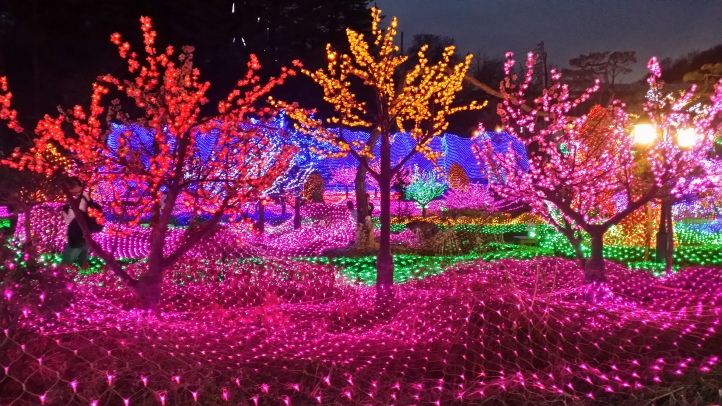Though South Korea is already regarded as a developed country, the Korean toilet culture is so different from that of the other developed countries that as a foreigner, I find the Korean toilet culture a bit odd. This was my no.1 culture shock when I first visited the country. Even if I had already lived in Seoul for 6 months, I still could not get used to it.
Aspects of the Korean toilet culture which foreigners may find strange
Below are some features of the Korean toilet culture that a foreigner should be aware of to avoid culture shock:
Squat toilets
Traditionally, all toilets in South Korea were squat toilets but with the increase of living standard due to economic development, a lot of buildings have already changed their plumbing systems to convert to western-style seat toilets. However, in the older buildings and some local Korean restaurants, you may still find the squat toilets. In some places with larger restrooms, you may even find a combination of western-style seat toilets and squat toilets in the same restroom.
Garbage can in toilets
You may note that for some toilets, inside the toilet stall (even for the one with a western-style seat toilet), there is a garbage can and a notice telling you to put your used toilet papers into the garbage can instead of flushing them into the toilet. I was really shocked when I first saw a lot of used toilet papers piling up in the garbage can inside the toilet stall as I found the used toilet paper scene disgusting and unhygienic.
You may wonder why the Koreans have such custom. In the past, the Korean plumbering systems were very weak and could not handle massive amount of matters. So, flushing the used toilet papers into the toilet might cause clogging. Actually, nowadays, for the new buildings with much improved plumbering systems, flushing the used toilet papers into the toilet is okay but some building owners still put up notices asking users to use the garbage cans and not to flush the toilet papers into the toilet. If you see such a notice inside the toilet, it is better to follow the custom to put the used toilet papers into the garbage can as you are not sure whether the building’s plumbering system can handle the flushing of toilet papers.
If you want to avoid seeing the mountain of used toilet papers, as a tourist, it is better to save your toilet business for the toilets in modern shopping centres, department stores and hotels.
Unisex toilets
In some older buildings and local Korean restaurants, there are no separate toilets for men and women. Instead, there is only one unisex toilet with both a toilet stall (with a squat toilet or a western-style seat toilet) and a urinal stall on the wall. If you find such a situation and you are not used to watching the other using the toilet and/or having someone watching you using the toilet, it is better to lock the door of the toilet to prevent other people from entering the toilet while you are using it.
Toilet paper supply
Sometimes, you may see rolls of toilet paper hanging at the entrance of the public toilets. If so, you need to get the toilet paper from there as this indicates that there is no toilet paper available inside the toilet stalls in the restroom. Of course, it is always better if you can carry your own toilet paper with you.
Toilet theme park in Suwon
If you want to learn more about the toilet culture, you may visit the toilet theme park located in Suwon in South Korea which officially opened on 4 July 2012. In the theme park, there is a toilet seat-shaped building which was once the home of Sim Jae-duck, a former Suwon mayor, and after his death, has become the toilet culture museum. The museum provides information on the world’s toilet culture like the signs of men’s and women’s toilets used in different countries around the world, photographs of public toilets, and the importance of sanitary toilet facilities. Outside the museum, there are a number of exhibits showing different styles of toilets, for example, the squat toilets, European chamber pots, and historical urinals. Given the existence of the world’s first toilet theme park, Suwon is also known as “the mecca of toilet culture”. You can watch this video for snapshots of the toilet theme park.
Mr. Sim Jae-duck is known as “Mr. Toilet” since he seems to have inseparable links with the toilet – he was born in his grandmother’s outhouse, constructed his home in the shape of a toilet seat, and dedicated a lot of efforts to the improvement of toilet culture not only in South Korea but also in other countries. For example, he drove the campaign to upgrade the toilets in South Korea for the 2002 World Cup co-hosted by South Korea and Japan. He is also the founder and former president of the World Toilet Association which has the mission of improving the toilet sanitation conditions around the world.
If you visit South Korea, don’t forget to go to the toilet theme park in Suwon – you may find it an interesting and special experience. I found that the toilet matters could be very interesting after looking at the exhibits inside the theme park.
Reminder: The date of publication of the next post will be announced on the “Latest News” page of this website when it’s available. Or you can follow my blog by clicking the “Follow” button on the sidebar to receive email notifications of new posts. Watch this space!
References:
鐘樂偉著,《韓瘋:讓世人瘋狂的韓國現象》,香港: 天窗出版社有限公司,2014年版, 140-143頁
Lindsey Galloway, “South Korea’s toilet-themed park“, BBC Travel, 2013-01-29
“World’s first toilet theme park opens in South Korea“, The Telegraph, 2012-11-27
“Lavish lavatory“, Korea Tourism Organization, 2010-12-29
Nah Noo-ree, “Korean Restroom Revolution“, The Yonsei Annals, 2007-10-30
Margaret, “Unique situations you’ll have with Korean toilets“, Seoulistic
